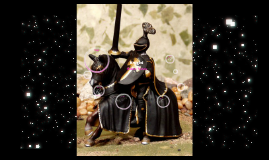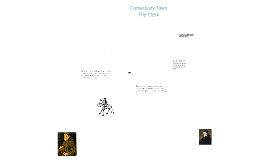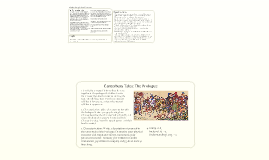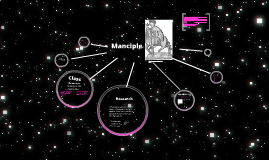Canterbury Tales
Transcript: Two lines of verse, usually in the same meter and joined by rhyme, forming a unit. 4. Interp. 6-8, Analyze Lit. 1-2, Understanding Lang. 1-2 Pentameter is simply penta, which means 5, meters. So a line of poetry written in pentameter has 5 feet, or 5 sets of stressed and unstressed syllables. In basic iambic pentameter, a line would have 5 feet of iambs, which is an unstressed and then a stressed syllable. For example: If you would put the key inside the lock This line has 5 feet, so it’s written in pentameter. And the stressing pattern is all iambs: if YOU | would PUT | the KEY | inSIDE | the LOCK da DUM | da DUM | da DUM | da DUM | da DUM That’s the simplest way to define iambic pentameter. 3. Characterization: Write a description of yourself in the same style of the Prologue. Dramatize your physical character and emphasize how it connects to your personal character. It must (1) be written in Iambic Pentameter, (2) written in couplet, and (3) be at least 30 lines long. 2. Characterization: pick a character mentioned in the Prologue. Write a paragraph noting how Chaucer describes the character both physically and internally (their character). What do you think Chaucer is saying about this type of person and their level in society? Iambic Pentameter 1. Iambic Pentameter: Find two lines that are together in the prologue that follow Iambic Pentameter. Rewrite them demonstrating the foot and syllable pattern. Put the unstressed syllables in lower case, and put the stressed syllables in upper case Canterbury Tales: The Prologue Characterization Couplet Characterization refers to a personality of a fictional character as well as to the methods by which a writer creates that personality. Writers use a number of methods of characterization. Sometimes a writer makes a direct statement about a person: "Phil was hard to get to know, but those who knew him liked him." More often an author reveals character in an indirect way, through action, through action, thoughts, and dialogue: "I should really study harder," Joan thought, laying the novel aside. "If I did, I could probably pass the test." Character can also be revealed through comments about the person by others in the story: "He's the kind of guy," says Linda, "who thinks football is the most important thing in life." A character's physical appearance and habits can help to reveal personality: "Doris wore the same threadbare dress she had worn to the party, but today she stood straighter, her shoulders squared." In defining a character, a writer will often combine these techniques to create a lifelike picture. Canterbury Tales: Devices Let’s define some terms to help explain this one. Meter refers to the pattern of syllables in a line of poetry. The most basic unit of measure in a poem is the syllable and the pattern of syllables in a line, from stressed to unstressed or vice versa. This is the meter. Syllables are paired two and three at a time, depending on the stresses in the sentence. Two syllables together, or three if it’s a three-syllable construction, is known as a foot. So in a line of poetry the cow would be considered one foot. Because when you say the words, the is unstressed and cow is stressed, it can be represented as da DUM. An unstressed/stressed foot is known as an iamb. That’s where the term iambic comes from.

















